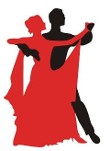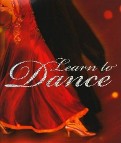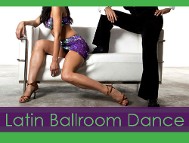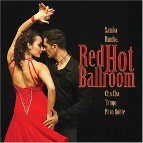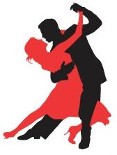DANCE ETIQUETTE ACCORDING TO BEISWENGER
By Vivian Beiswenger
Reprinted from the November/December 2007 issue of Dance Spotlight
In researching this article, I came across several web sites with good advice, but no one site that I thought said all that was needed. I decided to try my own hand at coming up with a set of guidelines and now that I wrote them down, I may actually have to follow my own advice! Where I agreed with published advice, I incorporated it and added many of my own thoughts. I’d like to acknowledge some of the authors and web sites that, in my opinion, had good ideas: James Marshall, Aria Nostratinia, Erik Novoa, Jean Kim, and justdanceballroom.com. I invite your comments and suggestions for improvement. Please email them to me at dancespotlight@blsdc.com.
FIRST, DRESS FOR SUCCESS:
1. Before you even show up at the dance, prepare for a social activity that involves sharing your personal space with others. Shower, use deodorant and mouthwash, minimize the colognes and perfumes, and pack mints. If offered a mint, consider that there may be a reason, and take one or check your breath. If coming directly from work or a workout, pack toiletries and/or clothing to freshen up before you ask someone to dance. If you are allergic to perfumes, consult a physician, as it will be impossible to eliminate these completely from a social dance unless you are the czar of the dance and can refuse admission. If you perspire profusely, I suggest bringing an extra shirt (or two) to change, if needed. The number one reason why people don’t want to dance with another person is how he/she smells.
2. Wear clothing that does not restrict your or your partner’s movement. Wear appropriate footwear. Dance shoes are best, but, if you don’t have or can’t afford dance shoes, wear a shoe that has support for your heel (no flip flops or open-back shoes) and avoid heavy footwear (boots, platform shoes, work shoes, etc.). Clothing and hair styles/adornments should not have moving parts that will hit or snag on your partner or your partner’s clothing. Follow the dress code for the event you are attending. It’s fun to dress up once in a while. Don’t wear jeans and sneakers to a dress-up event.
ASKING FOR/ACCEPTING/REFUSING A DANCE:
1. A smile is your greatest asset. The more of them that you give away, the more you get. Use a smile to ask for a dance, to accept the invitation, during the dance, and at the end of the dance when you thank your partner. Everyone wants to feel that the person with whom he/she just danced enjoyed it (so show it or fake it until you make it).
2. Make eye contact and ask your partner’s name if you don’t know it. The best way to be interesting is to be interested.
3. Accept an invitation whenever possible. It’s okay to refuse a dance if you don’t know the dance, have promised it to someone else, or need a break. If you must refuse, give your reason, and then never turn around and accept someone else’s offer for that same dance. When possible, offer to do the next or a future dance that you know. It’s always acceptable to refuse someone who has hurt you, put your safety at risk, behaved inappropriately in the past, or become a pest by requesting too many dances, but do it graciously. Avoiding eye contact with these individuals is often a good way to avoid the request in the first place.
4. It’s acceptable for women as well as men to request a dance. If the person you are asking is with someone, be respectful and considerate to that person, but do not ask the partner for permission for the dance. This is passe? and potentially offensive. Ask the individual directly. Do not interrupt a conversation and yank someone away. Personally, I appreciate it when someone asking my partner or me to dance begins by asking “us” if we were going to do the dance, especially when the dance is one that may only be offered once or twice during a dance, such as quickstep or Viennese waltz.
5. Don’t monopolize a dancer, especially one who is a better dancer than you.
6. Be willing to dance with beginners. We were all there once and he/she might remember you after he/she becomes a great dancer.
7. If you are being turned down a lot, check your personal hygiene, your approach, and your smile. Be sure that you are not being a pest by asking the same person too often.
DURING THE LESSON
1. First, do not join a lesson advertised as above your level in that dance. Intermediate to advanced dancers may often take a lower level class to review basics or practice the other role (lead or follow), but beginners should never jump into a higher level class without the approval of the teacher. If you are an intermediate to advanced level dancer in one dance, it doesn’t mean that you can jump into an intermediate or advanced level class in another dance. You should start at the beginning, master the basics of the new dance, and ask the instructor to advise you when to move up.
2. Follow the rules of the class. If the class requires rotation, follow the rotation as instructed by the teacher. Do not jump the line in rotations. Leave personal issues outside the classroom and do not let your like or dislike of an individual disrupt the flow of the class. Do not disrespect other members of the class by skipping them or not dancing. Many classes allow couples to step out of the rotation. If this is important to you, ask before you join the class, and if you choose to dance with one partner, move out of the line of rotation, if possible. Personally, I recommend rotating. You and the class will accomplish more. When the good dancers rotate, they bring up the level of the other dancers and the class as a whole accomplishes more. When the slowest learners don’t rotate, the teacher has to decide whether to slow down the class for them or lose them. When regular partners rotate, they hone their own skills and truly learn to lead and follow anyone. Finally, rotating may reduce/avoid stress or identify issues in a regular partnership. A lady may actively back-lead her own partner, but not someone else. Finally, if the lead/follow isn’t working with anyone, then maybe the problem isn’t with your partner.
3. If you are a student in the class, do not attempt to assist the instructor without being asked. Do not talk to your partner while the teacher is talking. It disrupts the class and often requires instructions to be repeated. Pay attention and do not deliberately deviate from the steps being taught. It’s unfair to your partner and disrespectful to the teacher and the rest of the class.
4. One approach I learned the hard way: always try first to do the last thing the instructor asked to be corrected. The teacher is usually looking for a sign that most of the class “got” this point before moving on. By focusing on earlier instructions rather than the last, you may hold up the class by repeatedly missing the current task.
ON THE DANCE FLOOR:
1. Never criticize your partner’s dancing or blame your partner for a misstep. The single biggest secret to success in social dancing, or any kind of partner dancing for that matter, is to make your partner happy. Make your partner feel appreciated and as comfortable as possible. Personally, I would rather dance with a smiling, appreciative beginner than an advanced dancer who looks bored, angry, or put-upon. Smile (always) for social dancing. You are not putting on a performance where negative body language may be part of the act. Thank your partner at the end of the dance and walk with him or her off the dance floor unless he or she is picked up by his or her next partner. Remember the Law of Attraction: what you give, you will get back in spades!
2. When engaging in a dance that usually travels (waltz, foxtrot, tango, quickstep, Viennese waltz, samba, paso doble, Peabody, country two-step, polka, etc.), follow the line of dance. Travel counter-clockwise around the perimeter of the floor. If you are not traveling, stay in the center of the floor. If you are traveling slowly, leave room between you and the wall for faster dancers to pass. Do not stop and talk on the dance floor for a significant length of time or backup into moving dancers. For some dances that move very little and do not follow specific alignments (rumba, cha cha, swing, jive, hustle, mambo, salsa, merengue, etc.), you can use the entire floor, but only if no one is doing a traveling dance at the same time (e.g., swing and foxtrot music overlaps). The spot dancers should leave the perimeter of the floor to the traveling dancers.
3. Be aware of other dancers around you. Do not crowd others, if possible. Avoid collisions and protect your partner. If a collision happens, briefly apologize, no matter whose fault it was. Gentlemen, please, please, please, do not overpower the lady and throw her in the direction of other dancers. Leads should be subtle and allow the lady to dance herself and avoid accidents. It is unnecessary to push or pull the lady around the floor. If she is not following, rather than strong-arming her, adjust your step patterns to her level. Ladies, you can help to avoid incidents by warning your partner of traffic behind him, either verbally or by squeezing his hand/arm. And, before you extend your arm in that long stylish reach, check to be sure no one’s eye or other body part is in the way.
4. Ladies, do not attempt to lead or back-lead. Gentlemen, please be aware that a beginner lady may not have enough control and balance to avoid stepping first. Don’t chastise her for leading when she might be simply struggling for control. Adjust your patterns to her level and avoid giving instruction on the dance floor unless it’s specifically requested.
5. No matter how good you are or how incapable your partner is in your own mind, do not volunteer dance instruction. Don’t count or call out the steps. If you can’t lead the pattern acceptably for your partner’s ability level, use another figure.
6. Use common sense appropriate with the crowd on the dance floor. Don’t take over the dance floor or use extended arms or competition routines on a crowded floor.
7. Mixers are often used during social dances to facilitate meeting and dancing with new people. They usually raise the fun quotient at an event. Whether you are the best or worst dancer in the room, if you know the dance, participate. Dancers who don’t participate take away from the festivity. Ballroom dancing is a social activity and a mixer is a great way to meet new people and make new friends. You can never have too many friends. Remember, though, that a mixer is about mixing. It’s offensive and insulting to the other dancers to observe the person who tries to “cherry pick,” hanging back to dance only with the best dancers in the mixer line.
Above all, be happy and have fun! Remember that the Law of Attraction is always at work! “Do what you love. ... As you commit to your joy, you will attract an avalanche of joyful things because you are radiating joy [The Secret].”
About the Author: Vivian Beiswenger, in addition to being the editor of the Delaware Valley Dance Spotlight Newsletter, owns the Ballroom, Latin and Swing Dance Center located in several locations in Montgomery County, PA. She is a former corporate executive and former Senior Vice President of USA Dance. She has organized and chaired many dance competitions including the Delaware Valley Jubilee Championships, several Northeastern Regional Championships, the National Junior, Middle and High School Championships and the 1997 USA DanceSport National Championships (where the US representatives to the World Amateur Championships were selected). She is married to Barry and has one son, Jared - their pride and joy!
Reprinted from the Nov./Dec.2007 issue of the Delaware Valley Dance Spotlight, a publication of USA Dance. Send comments to dancespotlight@blsdc.com.
